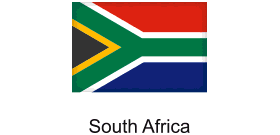 Why Airlines do no rush to fill SAA’s popular domestic routes
Why Airlines do no rush to fill SAA’s popular domestic routes
With state-owned South African Airways (SAA) grounded until July, its absence has impacted regional networks. Ideally, private airlines would have jumped at the chance to fill Southern Africa’s busy regional routes, previously dominated by SAA. However, government regulations are preventing airlines from filling in these routes.
According to The South African, the prolonged absence of SAA has resulted in limited connectivity on key routes in Southern Africa. Usually, routes operated by grounded airlines are released temporarily to other carriers to maintain connectivity. However, the South African government has refused to do so.
This means private airlines have been unable to take over routes previously flown by SAA and SAA Express, frustrating passengers and leaving vital connections untended. The government’s protectionist move was likely made to ensure SAA doesn’t have competition when it resumes flights. However, the move has hurt impacted passengers.
For instance, previously direct services from Johannesburg to Lilongwe, Malawi, are now absent. Instead, passengers have to take connecting flights with Ethiopian through Addis Ababa, making the journey over 35 hours! Even popular destinations like Nairobi no longer have direct connections.
Stay informed: Sign up for our daily aviation news digest.
SAA and SAA Express both operated regional routes that were quite profitable for the airlines. To protect competition from private airlines on these routes, South Africa’s Air Services Licensing Council (ASLC) has refused to approve new airline schedules.
Carriers like Airlink, which could take over several routes if they were to open up, have pointed out that the ALSC is required to assess air traffic routes and revoke them from dormant airlines. However, the ALSC has not made such a decision, leaving a connectivity vacuum.
Airlines have lodged complaints with the ALSC, citing the inaction on dormant routes. However, change is not expected to occur swiftly, drawing the ire of airline executives. In a statement seen by The South African, one airline CEO said,
“Why should South Africans be penalised by limited air connectivity due to SA Express and SAA’s inability to restart their operations, when private role players are available to service these routes immediately?”
Much of the current issue arises from the continued grounding of South African Airways. While the government hopes to have the airlines back in the skies by April, realistic estimates suggest no earlier than July. The airline is currently enacting a business turnaround plan after receiving R10.5bn ($698mn) from the government in October. However, disagreement over how to use the funding has slowed down the process.
While SAA might be grounded, affiliated airlines have cut ties and moved on. Former franchisee Airlink has rebranded itself and quickly become South Africa’s second-biggest airline. Despite growth in the market, without regional routes, passengers will continue to struggle to reach their destinations.
